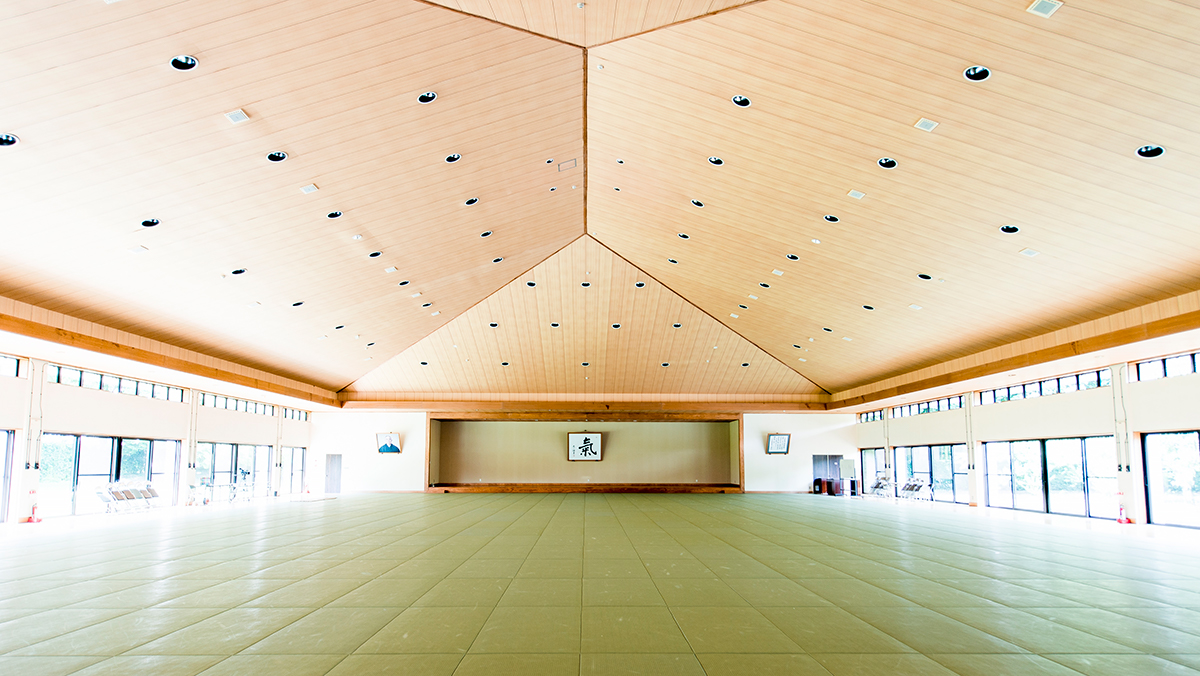A Short Instruction:
The purpose of this article is to practice and validate the Ki principles (Mind moves body) which are the foundation of Ki-Aikido in your daily life. Therefore, it has no meaning if you just read it without practicing it.
The fundamental method of mastering anything is practice. However, not just practice, but it is also important to validate how one has changed as a result of the practice.
It is easy to lose what you have learned without practice. On the other hand, you will never lose what you have learned through practice and validation. Therefore, please read, practice, and validate the contents of my article at least a month.
To greet with Ki
Greetings have always been fundamental in building relationships.
Traditionally we were given strict training in greetings through our family. However, in recent times, it is often the case that this training must be conducted at school or at work. The same thing is happening at the dojo.
A few years ago, I had the opportunity to observe the annual “new employee seminar” at a major consulting firm. The instructor began by giving instructions on greetings to the new employees who came from various industries from around the country.
I still remember my surprise at the lack of the participants’ ability to greet properly — it was beyond my imagination. I had a realization that this is a generation where training must be conducted in the work environment.
In that seminar, instructions were given such as “when you bow, bow at this angle” and “first and foremost, greet in a loud voice”. Although there were some people who improved with this advice, many people had greetings that were correct in shape only and many who mistakenly thought that all you needed was to be loud.
Although it may be meaningful to start with proper shape and form, the most important thing is to understand the purpose of the greeting.
A greeting is a Zen terminology. But instead of discussing the Zen aspect of it, I would like to address how it relates to learning about Ki.
All greetings start by sending your ki (mind) to the person you’re addressing. And this ki must be a positive ki.
If you don’t send your ki to the person you’re addressing and just speak in a loud voice, it is only noisy and annoying. It is the same as yelling “Hello!” just for the sake of saying it when you have no intention of welcoming someone.
Because you send your ki, you “realize” things. If you send your ki to the person you’re addressing, you will be able to understand their state of mind.
Whether they are energetic. Whether they are not energetic.
Whether they are happy. Whether they are not happy.
Whether they understood what you are conveying. Whether they did not understand.
If you do not send your ki, you cannot realize a single thing about their state of mind. Before you train the forms and shape, it is necessary to train to send your ki. This is why greetings are the basis of building relationships.
In your daily life, are you actively greeting people?
A: “Hello Mr. B!”
B: (to A), “Oh, Hello!”
I often see an exchange like this. Physically it looks like both A and B are greeting in the same fashion. However, in terms of the usage of ki, A and B are completely different.
A notices B and actively greets him. The reason he can do this is because his ki is extending. On the other hand, B first notices A when A greets him, and is only reacting to A. That is to say, A is “greeting” B whereas B is “reacting” to A.
I am not saying it is wrong to react. A “greeting” begins by sending ki to the other person, so if you are always reacting it is necessary to check if you are actively directing your ki.
At work or at school, it is easiest to learn by making a game out of the training. The rules are simple: whoever greets first wins. The one who react loses. By doing this you will actively direct your ki towards your surroundings.
Children may go too far and hide and ambush someone so that they can greet first. Even then, this will ingrain better habits than not greeting at all or greeting in form only.
When both people send their ki to each other, there is a communication of ki. There is a ki exchange. A “greeting” is the basic form of exchanging ki.
[Things to practice]
• Actively greet others. Instead of “reacting”, “greet”.
• Keep a daily log of the number of times you greeted someone and the number of times someone greeted you.
• Initially aim for a winning record. Make you goal a perfect record.
[Things to validate]
• Observe the changes in how the people around you respond to you.

